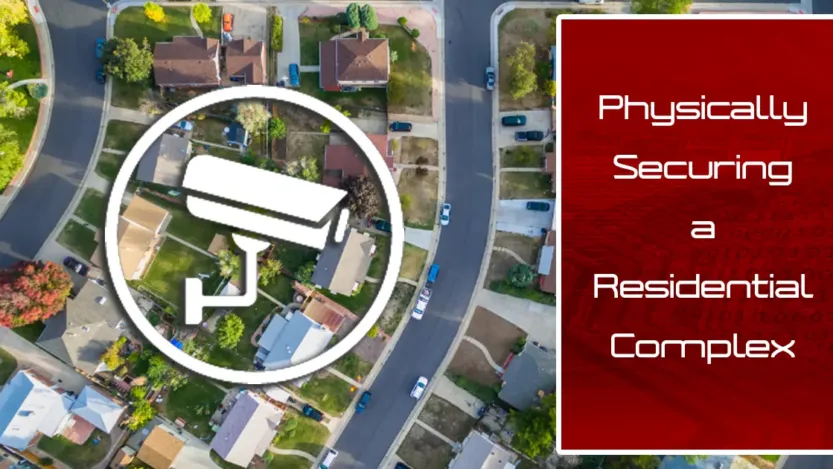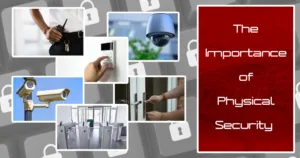Physical Security in Residential Complexes:
Ensuring the safety of residential complexes is a critical concern for property owners and management. A comprehensive approach to physical security not only protects the property but also provides peace of mind to its inhabitants. This guide outlines effective strategies for enhancing the security of residential complexes tailored to meet the unique challenges these properties face.
1. Physical Security in Residential Complexes: Custom Security Blueprints
Securing a residential complex begins with a meticulously crafted security blueprint, tailored to its unique features and vulnerabilities. This plan should encompass the layout, architectural nuances, and identified security risks, providing a structured approach to safeguarding the property. By considering various threat scenarios, the blueprint should outline specific responses, ensuring preparedness for any situation. Incorporating technological advancements and resident feedback into the planning phase enhances the blueprint’s effectiveness, making it a dynamic tool for residential security.
2. Implementing Robust Security Solutions
Following the security blueprint, the implementation phase focuses on deploying a suite of robust security measures. This includes state-of-the-art surveillance systems, the engagement of trained security personnel, and the establishment of stringent entry and exit controls. Regular reviews and updates to these security measures are imperative, adapting to the changing landscape of threats and leveraging technological advancements to fortify the complex against potential breaches.
3. Fostering a Secure Living Environment
Beyond physical measures, creating a secure living environment involves cultivating a culture of vigilance and safety among residents. This entails ensuring that the premises are well-lit, pathways are unobstructed, and security protocols are rigorously followed. Educating residents on personal safety practices and emergency procedures is fundamental, enabling them to contribute actively to the community’s security. Engaging residents in security discussions fosters a collaborative environment where safety is everyone’s priority.
4. Policies and Procedures for Enhanced Safety
The framework of physical security is significantly strengthened by accompanying policies and procedures. This includes conducting comprehensive background checks on all employees, instituting effective visitor management systems, and setting clear guidelines for the utilization of communal areas. Staying informed about the latest security innovations and adapting to emerging threats ensures that these policies and procedures remain effective in maintaining a safe residential environment.
5. Integrating Physical and Procedural Security Measures
A holistic strategy for physical security in residential complexes combines physical security technologies with proactive planning and resident education. Emphasizing a culture of safety, this integrated approach ensures a well-rounded defense against various threats. Continuous engagement with security trends and resident feedback enables the development of a resilient and adaptive security posture.
6. The Importance of First Impressions
The aesthetic and upkeep of a residential complex play a crucial role in its perceived security level. Effective lighting, visible security cameras, access control systems, and clear signage not only deter potential intruders but also demonstrate a commitment to resident safety. A property that is well-maintained sends a strong message about the seriousness with which security is regarded, enhancing the overall sense of safety among residents.
7. Learning from Historical Data
Analyzing historical security data enables property managers to identify patterns and vulnerabilities, informing the development of a property-specific standard of care. This data-driven approach allows for the formulation of security measures that address past challenges, ensuring that the security infrastructure is both relevant and robust. By learning from historical incidents, residential complexes can better protect against future threats.
8. Valuable Lessons from Security Oversights
Insights gained from previous security assessments reveal crucial lessons about potential vulnerabilities. For example, the absence of surveillance cameras, contrary to what signage may suggest, could undermine the security fabric of a complex. Acknowledging and rectifying such oversights are essential steps in meeting the standard of care and reducing liability. This reflective practice ensures continuous improvement in the security measures deployed, safeguarding the residential community against evolving threats.
Physical Security in Residential Complexes: Ensuring Resident Safety
Is your residential complex as secure as it could be? Consider a professional security assessment if you’re uncertain or seeking to address potential security gaps. Grab The Axe offers comprehensive evaluations, delivering actionable insights to enhance your community’s security posture in the face of current and future challenges.
References:
Pearl, M. (2021). “Security Assessment: Apartment/Condo Walkthrough.” Robson Forensic. Access the full article.
Securitas Technology. (n.d.). 2024 Global Technology Outlook Report. https://www.securitastechnology.com/2024-technology-outlook-report
Physical Security in Residential Complexes – To Learn More:
External Security Consultants for Enhanced Business Protection





Pingback: Secure Your Business Future with Comprehensive Physical Security Assessments - Grab The Axe - Grab The Axe
Pingback: Physical Security in Government Buildings: Comprehensive Guide to Enhancing - Grab The Axe